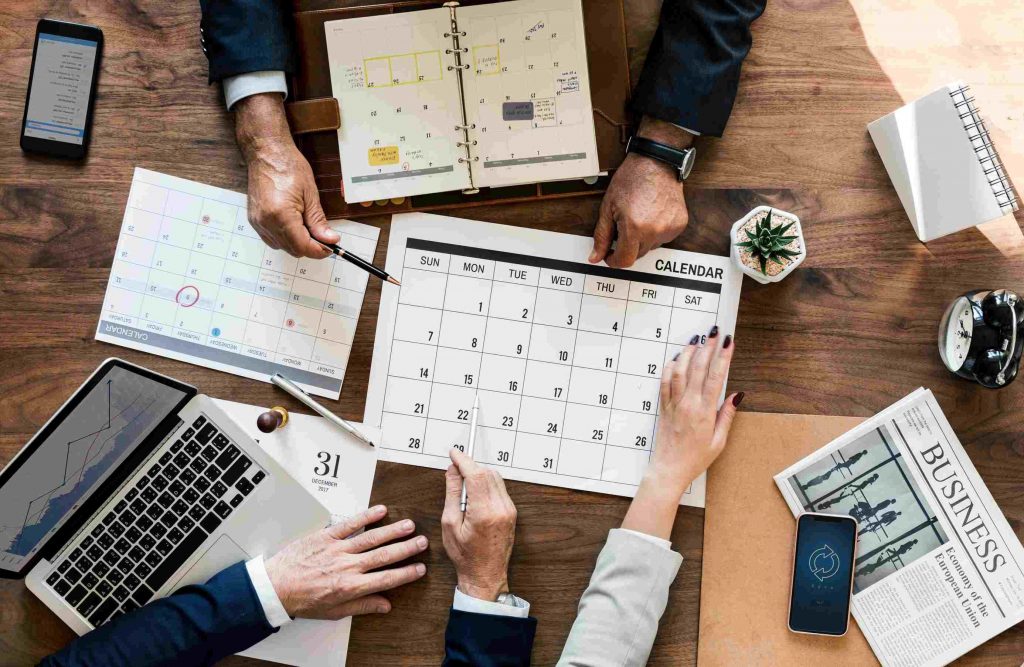Planning a Party or a Meeting- 6 Steps You Should Follow for Both

When planning a party, the right music, mouthwatering food and plentiful libations are all must haves. Or, depending on the party’s intended demographic, you may find yourself selecting colorful balloons, a bounce house and sugary sweets instead. Considering everything that planning any party entails, you may be wondering how party planning corresponds with planning a successful meeting at work as the title above suggests. Afterall, how many work meetings have you attended with music, balloons, and appetizers? Rest assured that although an unlikely correlation, both party planning and meeting prep have several steps in common, including the following:
Step 1: Make an exclusive guest list
Although we would love to extend invites to everyone, just like we did in grade school, it is often beneficial to streamline your guest lists. While creating a list of who to invite to a meeting, you should narrow the list down to who needs to relay information, who needs to hear that information, and who should be involved in any decisions being made at the meeting. Anyone who doesn’t fall into one of those categories doesn’t get an invite. Which brings us to the next step…
Step 2: Send an official invite
Blanket invites and invite via word of mouth should be left for college parties, not for most parties you will plan now and meetings in the workplace. The truth is that by being deliberate and sending invites out to only those who are on your exclusive list will make them feel like their attendance is important (if not mandatory). Avoid group text or group email as a method of sending invites; rather, contact each person individually.
Step 3: Communicate a clear theme
As you are sending out official invites to the lucky few chosen to attend your party or meeting, make sure that you clearly communicate a theme. In the case of a party, your guests will want to know what they are expected to wear (cocktail, casual, costume, etc.). For a meeting, your team members will want to know the topic of conversation so that they can prepare accordingly. To avoid any potential miscommunication regarding the meeting’s purpose, make sure that you communicate the theme not once, but twice. It should be apparent on the invite itself as well as a part of the reminder email that you will of course send the day before the meeting is scheduled to take place.
Step 4: Follow up on RSVPs
Once your party guests or meeting attendees view their personal invitation, they will check their calendar right away and RSVP immediately… Right? Wrong. Most need a gentle nudge to respond, which is why a day or so before the event or meeting, you should reach out (again individually) and remind them of the time and day, and check if they are able to attend. Having an accurate head count will ensure that you have enough supplies for everyone to participate- for a meeting, having enough chairs, some pens, and physical copies of the information being discussed is key.
Step 5: Plan participation
There are always ways to get even the most unwilling (and uncoordinated) party guests up and dancing, but how do you get people to participate at a meeting? If you followed the first few steps, you are off to a good start as having the right people in the room will help foster a participatory environment. You may also want to consider having attendees put their phones in a box near the door to take away the technology temptation. Allotting time throughout the meeting for open discussion is also important. During these times, touch base with everyone to see if they have any questions, concerns, or comments.
Step 6: Write your speech in advance
We’ve all been on the receiving end of a spontaneous toast or a speech that just simply falls flat. I’m talking crickets. Unless you enjoy awkward silence and eye rolls, you should always, always, always, plan what you are going to say and encourage anyone else presenting at the meeting to do the same. Even better, write down what you want to say and run through it once or twice.
While it may feel unlikely, there is a strong correlation between planning a party and a meeting. Follow these six steps to ensure that your next party (or meeting) runs smoothly.

